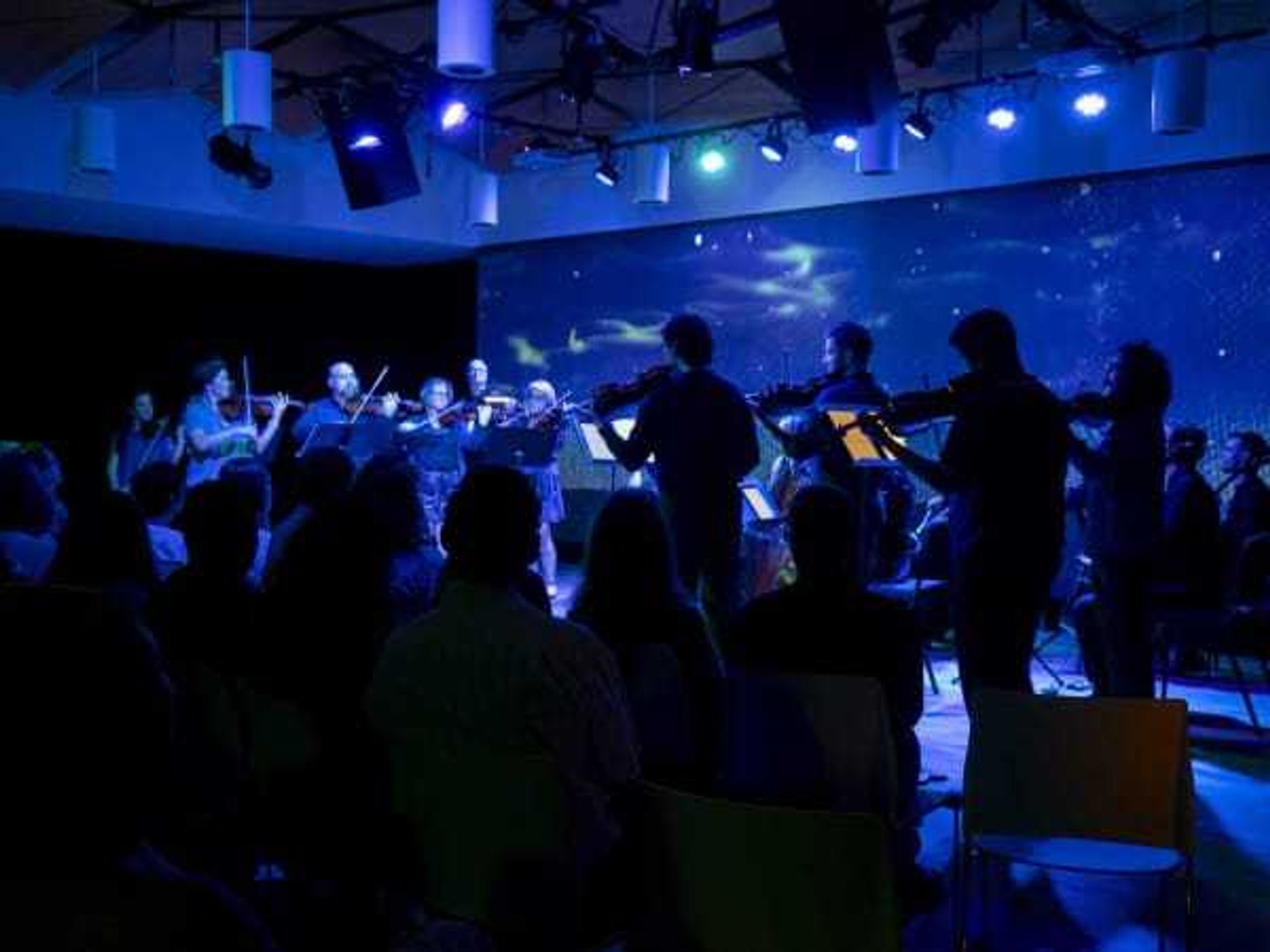If there’s one thing everybody born after 1980 won’t ever experience, it’s car culture. I’m talking gorgeous, made-to-last automobiles, family road trips, cheap gas, good radio, and of course, drive-in movies. By now, it seems we’re left with the bad (costly gas and snarled urban traffic), the nostalgic (Blue Starlite Drive-In, the New Beetle), and the attempts to make good again (gas-electric hybrids).
This week at the Fusebox Festival, the memory of car culture’s hip heyday comes to life in The Duplicates’ energetic adventure through the world of Elvis Presley, his pink Cadillac, and his white, rhinestone-studded jumpsuit.
Elvis Machine is staged in a castoff of Austin’s explosive growth, the long-shuttered Value Sky Park (it was once a parking lot for Austin’s old airport). While many of the audience sat on the pavement, a few rows of cars tuned their radios to a station rigged up to broadcast the show (the signal cut out about halfway through the show, but the dialog was amplified enough to hear anyway).
Before the show began, excitable girls in cropped sweaters and capris welcomed the audience, while two wordless toughs in jean jackets challenged a few guys to a dance-off. That felt like the 1950s — the height of Elvis’ fame — but the show opened in a diner. A blue-beehived waitress took orders from trench-coated customers — one of whom kicks off a surprising adventure. See, it’s 1977, and this is a 1950s-themed restaurant, and the expiration of that idyllic time is solidified with the announcement: “Elvis is dead.”
The waitress takes it kinda hard — she was Elvis’ first girlfriend — and so she heads off to rescue his iconic white jumpsuit from looters at Graceland. Combining live and prerecorded sound, in-person acting and projected video on a huge movie screen, the show races through protagonist Dixie Locke’s walk to Graceland, with stops at Sun Records and a curiosity shop, and enough high-speed chases to keep the audience chomping on popcorn (which the snack stand unfortunately didn’t include).
The action is chopped up into episodes, with a live band (earnest, but definitely not Elvis) and an emcee to narrate and tuneify Dixie’s adventure. There’s little need to worry about realism here: it’s the kind of story where a rubber chicken gets to stand in for headier collectibles and the action can pause for a musical interlude urging car-dwellers to do the right thing and make out.
In fact, Elvis’ girl isn’t the real star of this story, and neither is the absent, hip-grinding hunk. It’s about…. stuff. Objects. Memorabilia, and the memories that go with them. There’s an interview with the jumpsuit (it’s a bit vain, but thoughtful), surprising tenderness from a few mechanized contraptions close to the King’s heart, and an attention-hungry, possibly deranged, pink Cadillac. It’s this last anthropomorphized object — which reminded me of a retired Dr. Frank N. Furter in a (light pink) suit — that drives (sometimes literally) much of the plot, and even tries to derail it.
Sorry, Caddy, there’s only one possibility for a wild, messy, drive-in rock n’ roll party like Elvis Machine: the good girl’s gonna win, and so is the audience.
